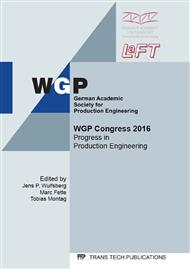p.288
p.296
p.304
p.312
p.320
p.328
p.337
p.345
p.353
Active Wind Turbine Deicing-Systems Produced via Plasma-Coating-Technology
Abstract:
Within the framework of the Renewable Energies Act, besides biomass power stations wind turbine systems enact a significant role since they produce power by using a primary source of renewable energies. As widespread and technical advanced wind turbines are, they still exhibit shortcomings when operating in cold temperatures. Therefore, especially in frigid regions, there is a high risk regarding icing and forming of hoarfrost. Iced rotor blades lead to considerable disadvantages during operation, like ice shedding, unbalanced or off-centered loads, and downtimes.Different heating systems that are already available show some disadvantages, such as the difficulties in integrating the installation of those systems directly in the production process. Thus, a new technology is presented which eliminates existing challenges and can be integrated into current production lines. Furthermore, the results of the investigations for the applicability of this new system for de-icing wind turbines is pictured. Due to an innovative plasma technology, the surfaces of rotor blades can be coated with a heating structure layer. The new technology is presented and the influence of different machine parameters of the coating process are shown based on several experimental results. In further tests, the metal structured rotor blades are examined under real conditions and the suitability of this technology for a series launch is rated.
Info:
Periodical:
Pages:
320-327
Citation:
Online since:
August 2016
Authors:
Keywords:
Price:
Сopyright:
© 2016 Trans Tech Publications Ltd. All Rights Reserved
Share:
Citation:


